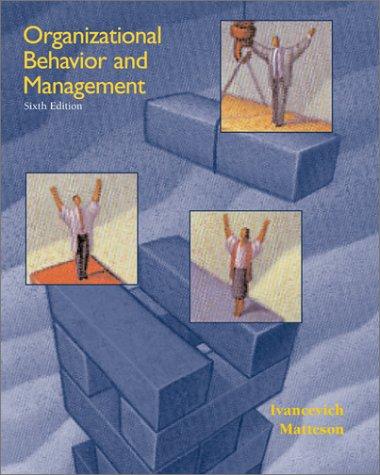Answered step by step
Verified Expert Solution
Question
1 Approved Answer
The United States has a relative abundant of skilled labor and so its comparative advantage is in producing skilled intensive goods. The factor-endowment theory suggests
The United States has a relative abundant of skilled labor and so its comparative advantage is in producing skilled intensive goods. The factor-endowment theory suggests that the U.S. will tend to export goods which required intensive skilled labor and import goods requiring relatively large amount of unskilled labor. International trade in effect lowers the wages of unskilled American workers relative to those skilled workers. Skilled workers - who are already at the upper end of the income distribution - find their income increasing as exports expand, while unskilled workers are forced into accepting even lower wages in order to compete with imports. According to the factor-endowment theory, then, international trade can aggravate income inequality, at least in a country such as the U.S. where skilled labor is relatively abundant. Are U.S. wages pulled down by workers in China or Mexico? That question has been underlines many Americans' fear about their economic future. They worry about that growth of trade with low-wage developing nations could reduce the demand for low skilled workers in the U.S and cause unemployment and wage decreases for U.S. workers. The wages gap between skilled and unskilled workers widened in U.S. during the past 40 years. Over the same period, import increased as percentage of GDP. These facts raise the question: Is trade harming the unskilled workers? If it is, is this an argument for an increase in trade barriers? Economist agree that some combination of trade, technology, education, immigration, and union weakness has held down wages for unskilled American workers; but apportioning the blame is tough, partly because income inequality is so pervasive. Evidence suggests that trade contributes relatively little to wage inequality. In fact, the vast majority of wage inequality is due to domestic factors, especially technology. One study, by William Cline, estimated that technological change was about four times more powerful in widening wage inequality in the U.S. between 1973 and 1993 than trade, and that trade accounted only 7 percentage points of all the unequalizing forces at work during that period. The results of Cline's study are summarized in Table 1. It is found that between 1973 and 1993, the ratio of skilled to unskilled wages increased by 18 percent. This was the net result of two opposing forces. First, there was an increase in the supply of skilled workers relative to the supply of unskilled workers, made possible by increased opportunities for education and training. The increase relative supply of skilled workers drove down the ratio of skilled to unskilled wages, thus promoting wage equality. But at the same time, a variety of forces promoted wage inequality, and these unequalizing forces overwhelmed the equalizing forces. This resulted in an 18 percent net increase in the ratio of skilled to unskilled wages. Besides trade and technology, these unequalizing forces included immigration, stagnant minimum wage and decline of unions. Table 1: Sources of Increase in the Ratio of Skilled to Unskilled Wages in the United States, 1973-1993 (Percent) A. Forces Causing Greater Inequality of Wages International trade 7 Lower transport and communication costs 3 Liberalization of trade barriers 3 Production sharing with other countries 1 Immigration 2 Stagnant minimum wage 5 Decline of labor unions 3 Skill-biased technological change 29 ... ? B. Forces Causing Greater Equality of Wages Increase in supply of skilled workers relative to unskilled workers -40 C. Net Effect 18 Note: Percentages for unequalizing forces must be chained, not added, to equal total unequalizing effect. Similarly, "A" and "B" must be chained to calculate "C." Discussion 1.According to Heckscher-Ohlin theory, what is the source of comparative advantage among countries? What are its implications on trade and return to factors of productions? 2.Is trade widening the wage gap between skilled and unskilled workers in U.S.? Does trade make the poor even poorer? 3.What is the main factor that responsible for the U.S. wage inequality? 4.What are the other factors that contributed to the wage inequality in U.S
Step by Step Solution
There are 3 Steps involved in it
Step: 1

Get Instant Access to Expert-Tailored Solutions
See step-by-step solutions with expert insights and AI powered tools for academic success
Step: 2

Step: 3

Ace Your Homework with AI
Get the answers you need in no time with our AI-driven, step-by-step assistance
Get Started


